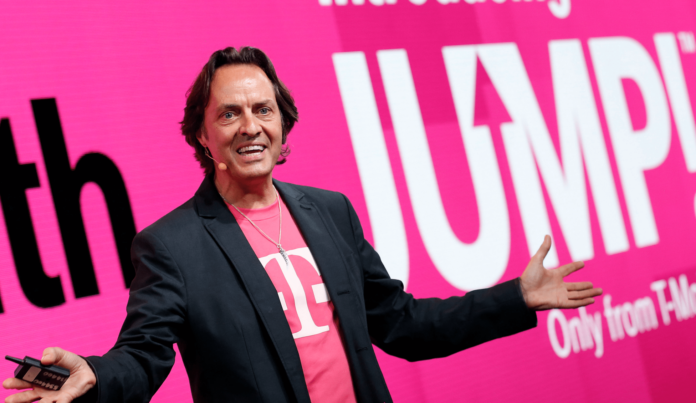Who does T-Mobile US CEO John Legere remind you of? Legere and Donald Trump seem to have been cut from the same cloth. Both are bigger than life. Both attract lots of attention to themselves and their brand with a few choice words. Both pick fights with everyone, even each other. And both have an opinion about everything, even each other. However, both are seeing success.
It wasn’t too long ago that T-Mobile US service was so bad they could hardly find a new customer. In fact, they were losing customers so quickly it would make your head spin. They missed the move from 2G to 3G and were falling far behind AT&T Mobility, Verizon Wireless and Sprint. Even many smaller providers like Tracfone, US Cellular and C Spire Wireless had better service than T-Mobile US.
Trump-like behavior works for Legere
Then something happened. T-Mobile US hired Legere, who brought several key executives with him to T-Mobile US from his old Global Crossing days. They spent time studying the wireless marketplace and laid out a battle plan, which was simple.
Legere would become the wireless version of Donald Trump. That’s when Legere started to bark. He focused first on AT&T Mobility. I think they were the first focus because they were the biggest threat. Then he widened his aim and is now also focused on Verizon Wireless and Sprint. Fair or not, they have been taking shots at every major competitor for the last few years.
T-Mobile problems; perception and reality
You have to remember, AT&T and Verizon Communications are titans in the industry and T-Mobile US was like a pimple on the tip of the nose of a tiny flea, yet that little Chihuahua sure had a loud bark. This strategy seems to be paying off for T-Mobile US on the perception front.
The reality front is a different story. While they are seeing success in this area as well, reality is a tougher nut to crack and it takes much longer to do. They have been investing in improving the network, reach and speed, and they have made good progress.
T-Mobile US service used to simply be the worst. During the last few years, they have invested money and improved quality and reach in many cell sites around the country. While things are definitely better in many areas, the quality and reach are not up to the levels of major competitors in most markets. Over time, service levels continues to improve, customers nationwide will indeed see the difference.
What users say
T-Mobile US spends plenty on advertising and marketing, but the real bottom line is what do users think? I regularly hear from readers and users from coast-to-coast and what they tell me is T-Mobile US is better than a few years ago, but they still have a long way to go.
However, I have noticed that the slice of the customer pie T-Mobile US attracts likes the youth-oriented approach in their advertising and marketing. This group likes the “bad boy” image. They also like the lower cost. These customers find price and style more important than quality, speed and reach.
Good news, bad news
So the good news is T-Mobile US is on the right track. They have a great marketing program and they are continuing to improve their network year after year. The bad news is this is a long process. Unfortunately, when you let a network languish for years like T-Mobile US did, it takes time to bring it back up to speed from coast-to-coast.
So, as a wireless analyst I would like to say congratulations to T-Mobile US. Keep it up. Keep getting better and stronger. Keep growing your sector. I look forward to seeing more improvements as time goes by. And if Legere does a great job with T-Mobile US, who knows, maybe he could run for president like Trump.

